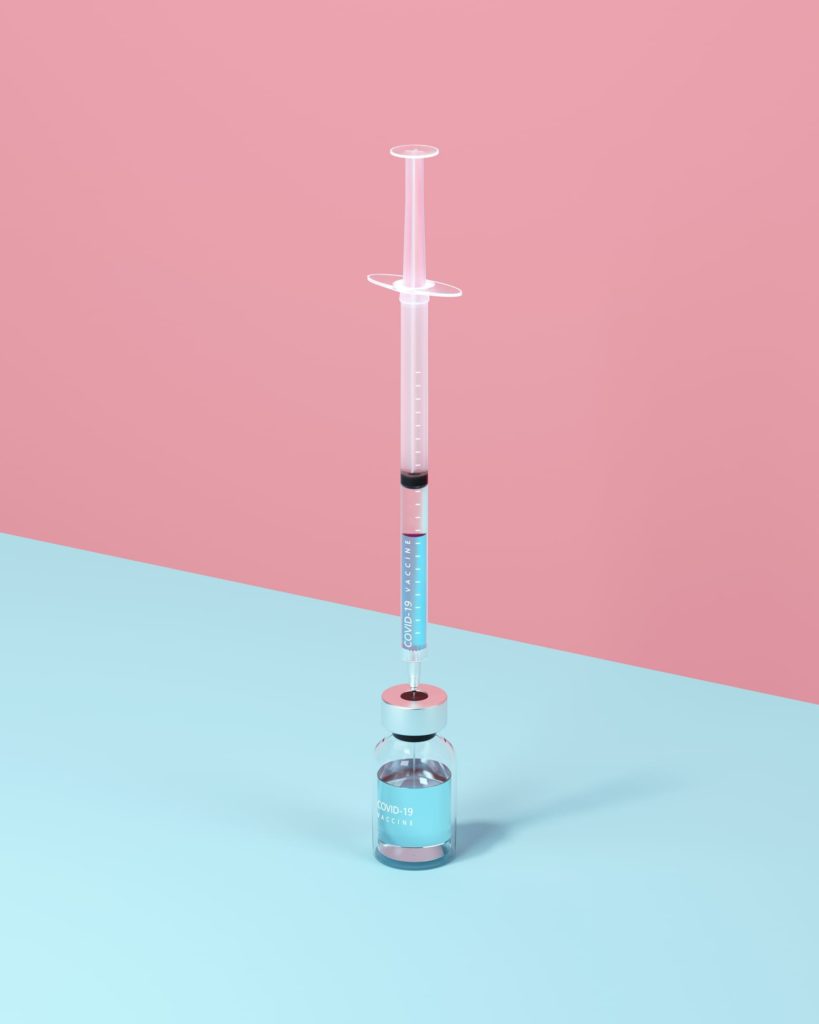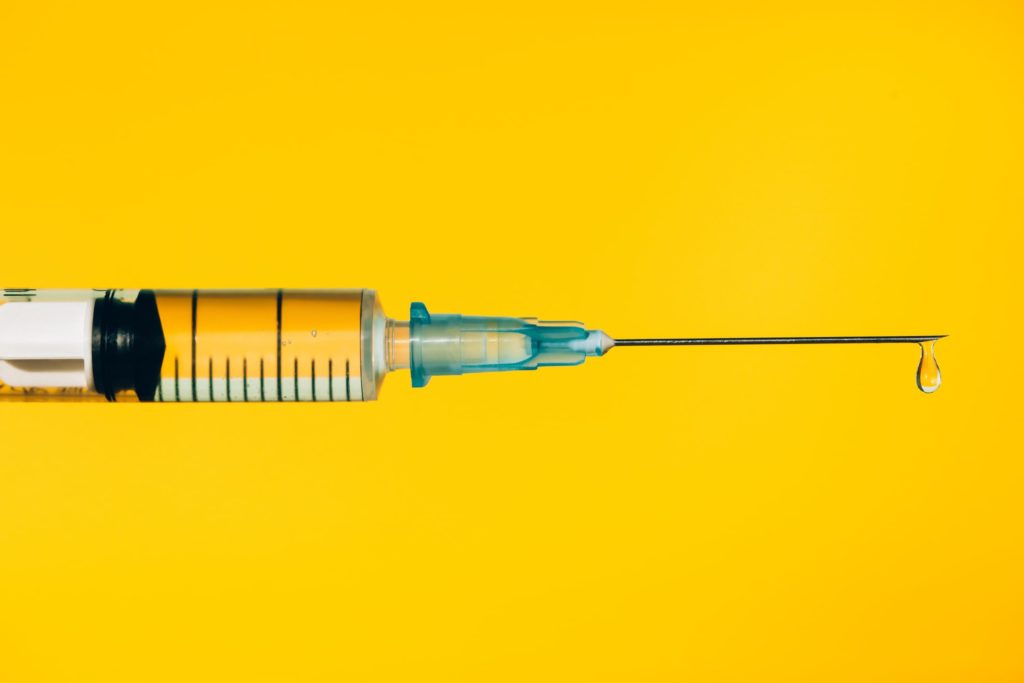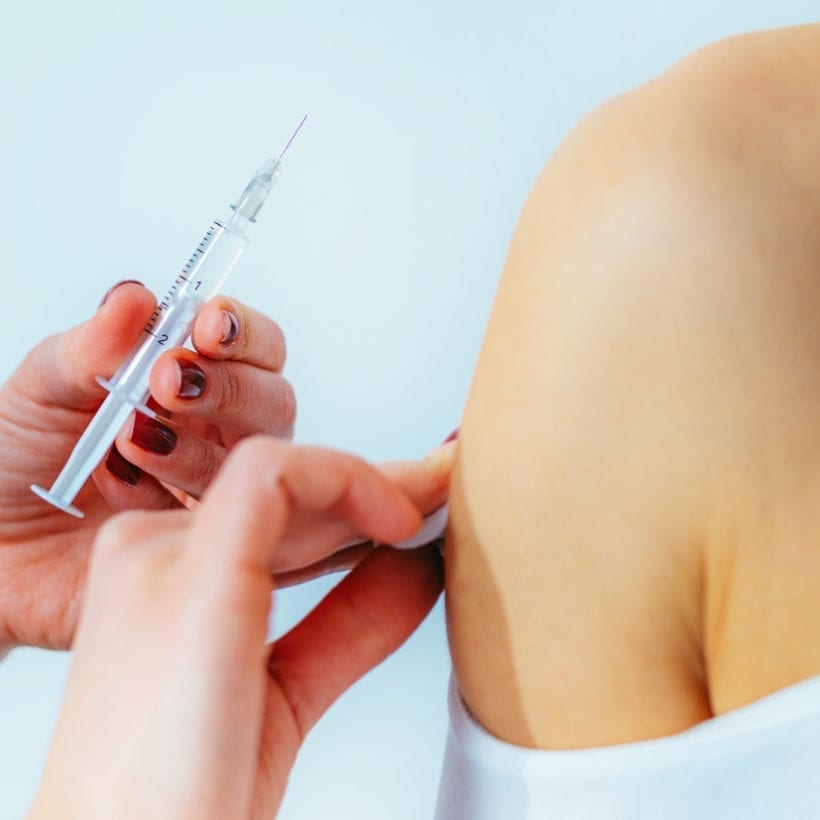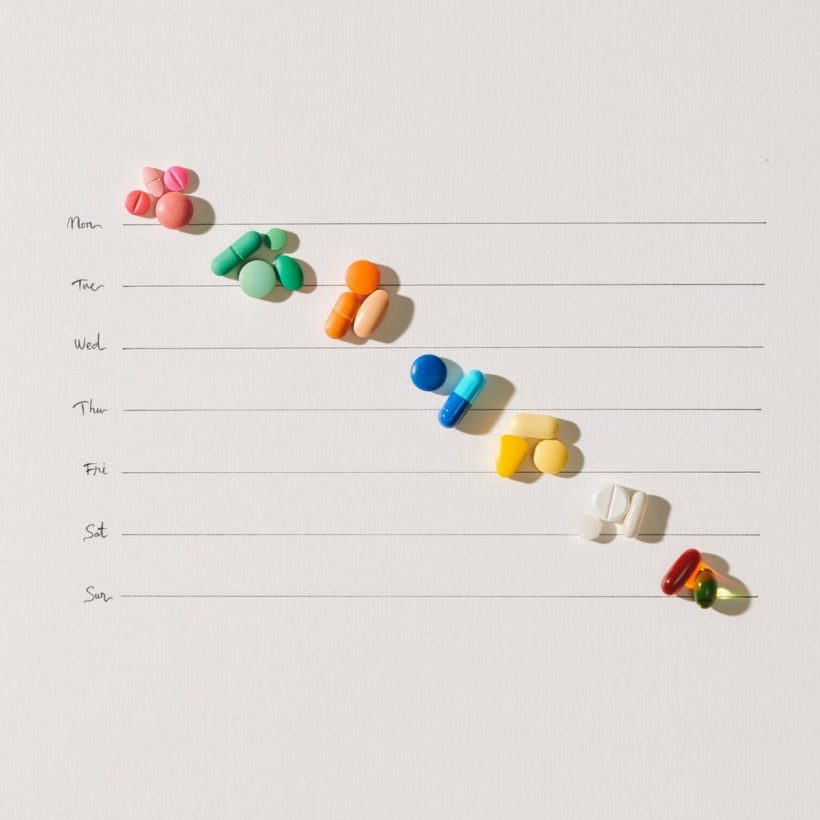We’re finally seeing the light at the end of the tunnel in possibly reaching herd immunity against COVID-19. In the U.S., getting any of the vaccines is free, regardless of your immigration or health insurance status. There are currently three vaccines available for distribution (with another two on the way), and as long as you’re at least 16 years old, you can get one. But in terms of which one is “best” — it’s tough to make direct comparisons since those apples-to-apples clinical trials don’t exist. But, if you want to know the key info on each of the vaccines, so far here’s what we know about each one:
Pfizer-BioNTech
Authorized on December 11, 2020, this Maine, Germany-based biotech company partnered with Pfizer to become the first vaccine available at protecting against COVID-19.
- Effectiveness: 95% at least seven days after the second dose; 100% effective in a recent study of 12-15-year-olds. The antibodies were slightly less effective against mutations in the variant found in South Africa.
- Age requirement: Must be 16+
- The technology used: Instead of using an inactive germ like most vaccines, this one uses messenger RNA (mRNA) technology, which is a genetic code that tells your cells to produce spike proteins on the surface of the virus. One of the characteristics of COVID-19 is spike protein that allows for the viruses to penetrate cells and cause infection, says the CDC. When mRNA increases these spike proteins, it signals your immune system to then create antibodies that’ll recognize the actual COVID-19 virus if you’re ever infected in the future, according to Yale Medicine.
- Dosages needed: Two; the second one 21 days after the first.
- Cost per dose: The U.S. government pays $20 per dose — the most expensive vaccine.
- Doses available: Last year, the U.S. pre-purchased 200 million doses and has purchased 100 million more this year.
- Side effects: More than 1 in 10 people have pain and swelling at the injection site, fatigue, headaches, muscles or joint pain, chills and fever. Less than 1 in 10 people have redness at the injection site and nausea. Less than 1 in 100 people have itching at the injection site, pain in limbs, enlarged lymph nodes, and difficulty sleeping. Less than 1 in 1,000 people have weakness in muscles on one side of their face, according to USA Today.
Moderna
Authorized on December 18, 2020, this Cambridge, Massachusetts-based company developed its vaccine with U.S. government scientists.
- Effectiveness: 94.1% at least 14 days after the second dose; It was slightly less effective in trials (about 86%) in people who are 65+, but some research suggests that the Moderna vaccine provides protection against both virus mutations found in the U.K. and South Africa.
- Age requirement: Must be 18+
- The technology used: Similar to the Pfizer vaccine, this one also uses a messenger RNA (mRNA). It trains your immune system to memorize and recognize spike proteins associated with the COVID-19 virus if you become infected.
- Dosages needed: Two; the second one 28 days after the first.
- Cost per dose: The U.S. government pays $15 per dose.
- Doses available: Last year, the U.S. pre-purchased 200 million doses and has purchased 100 million more this year.
- Side effects: More than 1 in 10 people have pain and swelling at the injection site, tiredness, chills, fever, swollen/tender lymph nodes under the arm, headache, muscle and joint pain, nausea, and vomiting. Less than 1 in 10 people have redness, hives, and rash at the injection site. Less than 1 in 100 people have itching at the injection site. Less than 1 in 1,000 people have swelling of their face and weakness in muscles on one side of their face, according to USA Today.
Johnson & Johnson
Authorized on February 27, 2021, this vaccine was developed by researchers at Harvard University and in Leiden, Netherlands.

- Effectiveness: 72% in moderate cases and 85% effective in preventing severe cases 28 days after the single dose; it has shown 64-82% efficacy against severe diseases in South Africa (depending on the severity)
- Age requirement: Must be 18+
- The technology used: This is known as a carrier vaccine, which uses a non-replicating Ad26 viral vector. Unlike the previous two vaccines, the Johnson & Johnson version uses an adenovirus (a harmless virus that when not inactivated can cause cold and flu-like symptoms) that carries genetic information that can enter cells. This modified virus delivers a spike protein, which activates the immune system, according to Yale Medicine.
- Dosages needed: One; It’s so far the only vaccine that requires a single dose.
- Cost per dose: The U.S. government pays $10 per dose.
- Doses available: Last year, the U.S. pre-purchased 100 million doses and has purchased 100 million more this year.
- Side effects: The J&J vaccine has noticeably fewer side effects than Pfizer or Moderna, according to an FDA report. More than 1 in 10 people have pain at the injection site, headache, tiredness, muscle pain and nausea. Less than 1 in 10 people have coughing, joint pain, fever, chills, and redness and swelling at the injection site. Less than 1 in 100 people have sneezing, tremor, throat pain, rash, sweating, muscle weakness, pain in the arms and legs, and backaches. Less than 1 in 1,000 people have hypersensitivity and itchy rash, according to USA Today.
Oxford-AstraZeneca
Developed by the University of Oxford, the company announced the results of the U.S. trial and will apply for FDA authorization this month.
- Effectiveness: 76% two weeks after the second dose and 100% effective in stopping severe cases in the U.S. trials.
- Age requirement: Must be 18+
- The technology used: This is also a carrier vaccine, but this one uses a non-replicating chimp adenoviral vector. This means that the modified adenovirus — in this case, it’s a monkey virus — is one that the human immune system can’t recognize. It delivers the spike protein that causes the immune system to go into defense mode to protect your body against the actual infection, according to Yale Medicine.
- Dosages needed: Two; eight to 12 weeks apart from the first.
- Cost per dose: The U.S. government pays $4 per dose — the cheapest of the vaccines. The company has committed not to profit from it while the pandemic lasts.
- Doses available: Last year, the U.S. pre-purchased 300 million doses.
- Side effects: More than 1 in 10 people have pain at the injection site, headache, tiredness, muscle pain, chills, fever, joint pain, and nausea. Less than 1 in 10 people have vomiting and diarrhea. Less than 1 in 100 decreased appetite, dizziness, sweating, abdominal pain, and rash. Less than 1 in 1,000 people have experienced unusual blood clots shortly after vaccination, according to USA Today. Though some countries suspended this vaccine due to those who developed blood clots, the World Health Organization still endorses the vaccine.
Novavax
This U.S.-based company is expected to release the results of its large U.S. trial and then apply for FDA authorization.
- Effectiveness: 89.3% after two doses in U.K. trials (though only 50% effective in a South African trial)
- Age requirement: Must be 18+
- The technology used: This one uses a protein adjuvant (an ingredient that strengthens your immune system’s response). The other vaccines trick your cells to create pieces of the virus that trigger your immune system, this one contains the nanoparticles (lab-grown spike protein itself), according to Yale Medicine.
- Dosages needed: Two; the second one 21 days after the first.
- Cost per dose: The U.S. government pays $10 per dose.
- Doses available: Last year, the U.S. pre-purchased 100 million doses.
- Side effects: No data currently available.
Which COVID-19 vaccine is right for me?

The Centers for Disease Control and Prevention does not recommend waiting for a specific brand and they don’t recommend one vaccine over another. In other words, whatever vaccine you get your hands on, get it. But there are a few things you might want to consider if you have access to all the currently available options (Pfizer, Moderna, and Johnson & Johnson):
Timing: If you’re looking for a “one-and-done” shot option, the Johnson & Johnson vaccine is currently the only one that doesn’t require a second dose (however, it is less effective). If you’re in a major metropolitan area where it’s difficult to get a vaccine, the J&J may be an ideal option for you if you have to travel far to get one. According to the CDC, if you receive a vaccine that requires two doses, you should get your second shot as close to the recommended interval as possible.
Age: If you are between the ages of 16-18, currently your only option is Pfizer.
Pregnancy: Pregnant women were excluded from the clinical trials, so we’re learning a lot of information as we go. In general, experts agree that if you’re pregnant or breastfeeding, it’s all the more reason to hop on getting any of the vaccines as they are at an increased risk for severe illnesses from COVID-19 compared to non-pregnant women. Studies from the American Journal of Obstetrics & Gynecology show that the vaccines based on mRNA technology (so the Pfizer and Moderna vaccines) are safe for pregnant and breastfeeding women. The CDC has concluded that the Johnson & Johnson one is also safe for pregnant women.
Existing injectables or fillers: If you’ve had face injectables or fillers (like Botox) done, you’ll want to speak with your doctor about Pfizer and Moderna that state facial swelling as a rare, but possible side effect.
If you currently have COVID: The CDC suggests that you wait until 90 days after your quarantine period: This is a precautionary measure until additional information becomes available, to avoid potential interference of the antibody therapy with vaccine-induced immune responses.
Existing health conditions: Though the vaccine is safe for most people, people who have an autoimmune disease or other underlying health conditions should check with their healthcare professional before getting it.
Allergic reactions: If you’re allergic to any of the ingredients, definitely chat with your doctor to see if the vaccine is right for you.







